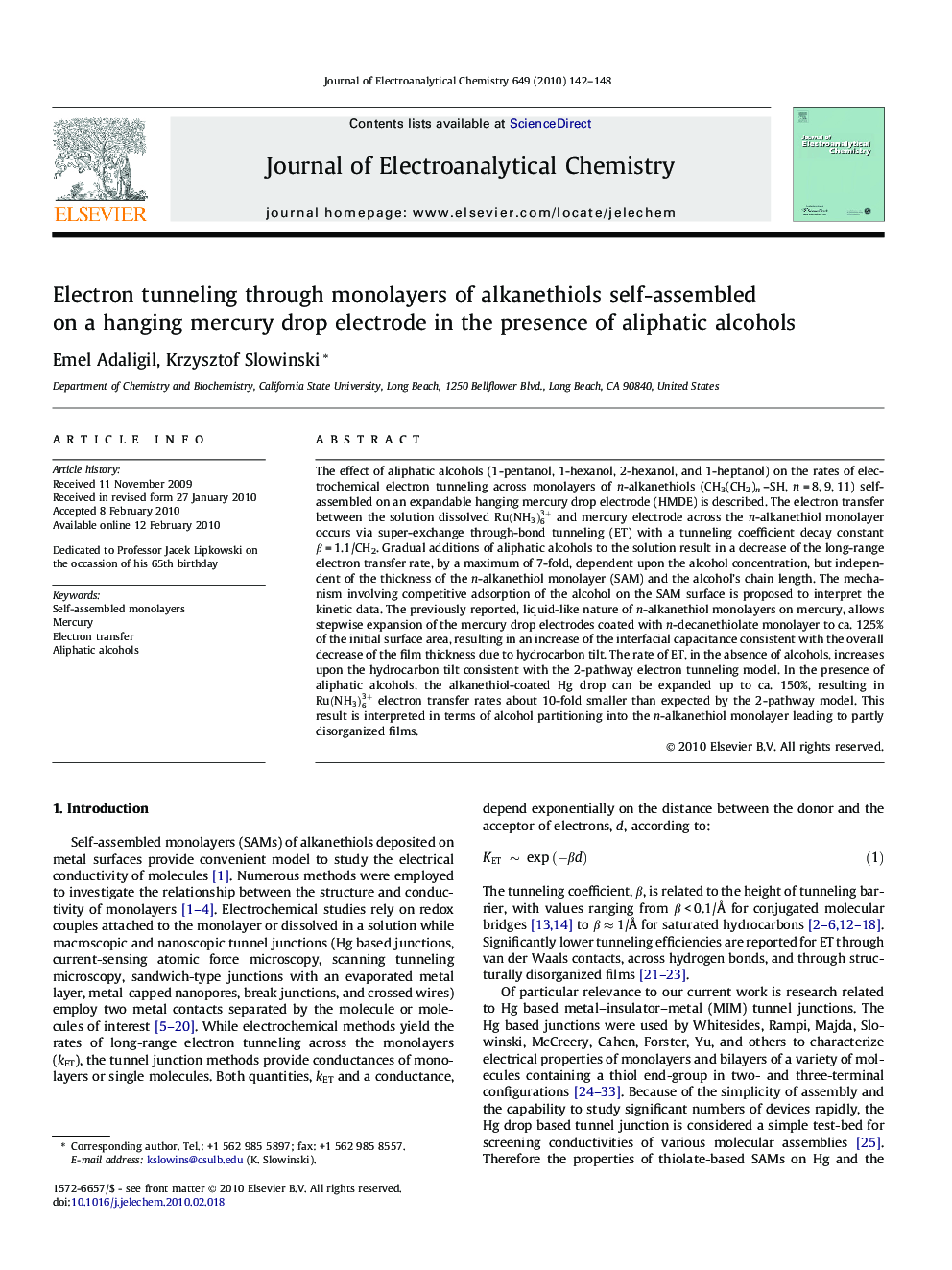| کد مقاله | کد نشریه | سال انتشار | مقاله انگلیسی | نسخه تمام متن |
|---|---|---|---|---|
| 219733 | 463294 | 2010 | 7 صفحه PDF | دانلود رایگان |

The effect of aliphatic alcohols (1-pentanol, 1-hexanol, 2-hexanol, and 1-heptanol) on the rates of electrochemical electron tunneling across monolayers of n-alkanethiols (CH3(CH2)n–SH, n = 8, 9, 11) self-assembled on an expandable hanging mercury drop electrode (HMDE) is described. The electron transfer between the solution dissolved Ru(NH3)63+ and mercury electrode across the n-alkanethiol monolayer occurs via super-exchange through-bond tunneling (ET) with a tunneling coefficient decay constant β = 1.1/CH2. Gradual additions of aliphatic alcohols to the solution result in a decrease of the long-range electron transfer rate, by a maximum of 7-fold, dependent upon the alcohol concentration, but independent of the thickness of the n-alkanethiol monolayer (SAM) and the alcohol’s chain length. The mechanism involving competitive adsorption of the alcohol on the SAM surface is proposed to interpret the kinetic data. The previously reported, liquid-like nature of n-alkanethiol monolayers on mercury, allows stepwise expansion of the mercury drop electrodes coated with n -decanethiolate monolayer to ca. 125% of the initial surface area, resulting in an increase of the interfacial capacitance consistent with the overall decrease of the film thickness due to hydrocarbon tilt. The rate of ET, in the absence of alcohols, increases upon the hydrocarbon tilt consistent with the 2-pathway electron tunneling model. In the presence of aliphatic alcohols, the alkanethiol-coated Hg drop can be expanded up to ca. 150%, resulting in Ru(NH3)63+ electron transfer rates about 10-fold smaller than expected by the 2-pathway model. This result is interpreted in terms of alcohol partitioning into the n-alkanethiol monolayer leading to partly disorganized films.
Journal: Journal of Electroanalytical Chemistry - Volume 649, Issues 1–2, 15 November 2010, Pages 142–148